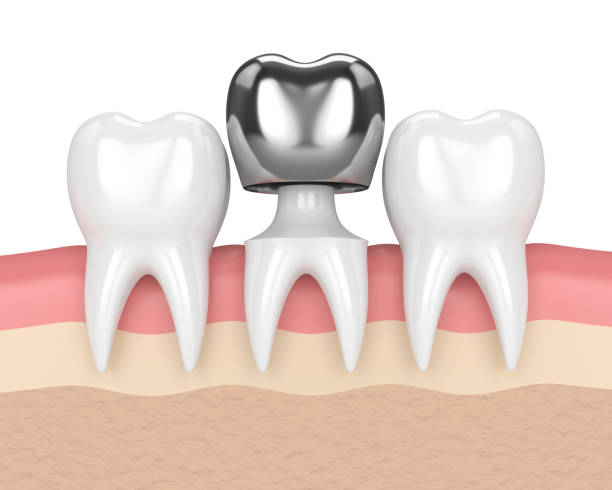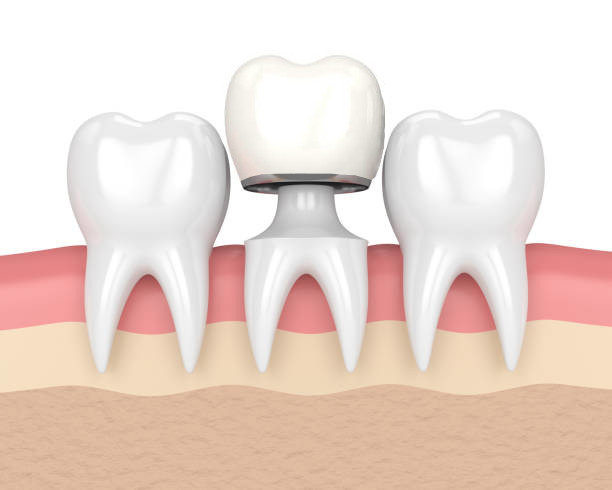Crowns
The tooth structure is weaker on teeth with large fillings, such as root fillings. This often means the tooth is more prone to break when in use. In these cases your dentist may recommend dental crowns.
Who needs Dental crowns?
A crown helps reform the tooth as one whole piece, and provides added structural strength. This is done by covering each of the cusps on the chewing surface of the tooth, importantly this spreads forces evenly and reduces the chances of any fracture.
What do crowns involve?
For your dentist to prepare a crown, it usually requires at least two appointments. Unless it’s a composite crown.
First Appointment:
Second Appointment:
- Before a crown preparation the dentist will numb you with anesthetic. This make sure you do not experience any pain or discomfort during the procedure. If this is something you are worried about it is important you tell your dentist.
- Firstly the dentist will smooth out the tooth to make space for the crown, following which they make a mould of the tooth. This is then sent to the lab to have the crown made.
- The dentist may then choose to put a temporary filling or crown to cover the remaining tooth.
It is normal to have some sensitivity and discomfort in this tooth for the following week. If the discomfort and pain becomes too severe please let your dentist know as soon as possible.
- This is normally at least one week later. The lab has normally completed the crown and delivered it to the practice.
- It is at this appointment that the dentist will try in the crown and if you are happy with it subsequently cement it in.
- For a comfortable fit it is normal for the crown to need some adjustments made. For example adjustments in the height of the crown if it feels too high in the bite.
- After you go home with the crown: If you continue to feel any discomfort in the bite or in the crown it is important to let your dentist know. It is not unusual to need a follow up appointment for further adjustment.
| Crown | Price |
|---|---|
| Full Metal Crown |
£495 |
| Porcelain Bonded to Metal Crown | £625 |
| Ceramic (Emax or Zirconia) Crown Front Tooth | from £880 |
| Ceramic (Emax or Zirconia) Crown Back Tooth | from £750 |

Full Metal Crowns
Crowns can be made from many different metals. The most common type is the silver coloured non precious metal made from cobalt chromium. There are yellow “gold” coloured non precious options, as well as precious metal gold options made from actual gold.
The disadvantage of cast metal crowns is primarily cosmetic. The advantage is that the price of most cast metal crowns (apart from the precious metal gold crowns) is significantly cheaper than that of porcelain crowns, and also the preparation of the tooth for the crown involves less tooth tissue being removed.

PFM Crowns
Porcelain fused to metal crowns benefit from the strength of the underlying metal, and the aesthetics of the superficial porcelain.
The advantage of a PFM crown is mainly cosmetic. The disadvantage is that for the metal to be effectively covered a thick amount of porcelain must be used, which often means that when the tooth is being shaped to fit the crown more tooth tissue must be removed.
This is a good option to compromise between price and aesthetics as the outer surface of the crown can be made to appear white, however sometimes a metal collar may be visible, and the shade of the white is often harder to match that of the natural teeth.

Full Ceramic Crowns
Full ceramic crowns use a reinforced ceramic internal layer where the Porcelain Fused to Metal crown would use metal.
This reinforced ceramic layer is often quite expensive to produce and involves specialist materials. The advantages of using an emax crown are primarily in aesthetics, and in toughness. The disadvantages of using an emax crown are that sometimes the material of the crown can be tougher than the opposing tooth and especially if the patient grinds their teeth, may wear down on the opposing natural tooth.
Zirconia is another type of ceramic that can be used which is generally more hard wearing than Emax but slightly not as adaptable aesthetically.